This article was first posted in November 2021, but has been significantly updated in the light of important new information in January 2022.
This article covers Programmes 3 and 4 in the Thirsty Work series broadcast on the BBC Forces Programme between 9th April 1940 and 7th March 1941.
It makes most sense if you read the introduction to the series (‘Thirsty Work’ Part 1) before this one.
- Programme 3 was broadcast on 13th May 1940 from recordings made at the Eel’s Foot Inn, Eastbridge, near Leiston in Suffolk on 13th May 1939
- Programme 4 was broadcast on 14th June 1940 from recordings made at the Exeter’s Arms, Wakerley, Northamptonshire on 8th & 9th May 1940
You can use these shortcuts to the different sections if you wish:
Programme 3: The Eel’s Foot, Suffolk
Broadcast on 13th May 1940
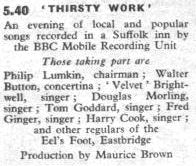

“An evening of local and popular songs recorded in a Suffolk inn by the BBC Mobile Recording Unit
Those taking part are Philip Lumkin, chairman; Walter Button, concertina; ‘Velvet’ Bright-well, singer; Douglas Morling, singer; Tom Goddard, singer; Fred Ginger, singer; Harry Cook, singer; and other regulars of the Eel’s Foot, Eastbridge.”
The singing nights at the Eel’s Foot Inn had already been the subject of a stand-alone radio programme broadcast on the Home Service on 29th July 1939 – Saturday Night at the Eel’s Foot, produced by Maurice Brown, as indicated in the Radio Times “blurb” for the first Thirsty Work programme. This had come about as a result of A.L. Lloyd paying a visit to his friend Leslie Morton, the Marxist historian who, in the early 1930s, had settled a couple of miles away, near the town of Leiston where he taught at the progressive Summerhill School and founded a local branch of the Communist Party. Morton also had an interest in “the people’s” songs and had become an accepted part of the company of singers in the Eel’s Foot on a Saturday night.
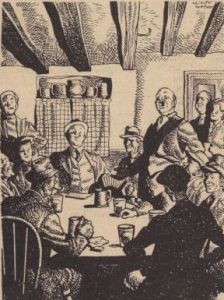 The 1939 programme (illustrated) – and a later one, East Anglia Sings, broadcast in November 1947 – are well known, and the original recordings can be heard on a CD called Good Order, on the Veteran label (see Links section). I could find no reference to any recordings being made in 1940 – local memories are of two visits, and there was nothing in the British Library Sound Archive for this year, although the 1939 and 1947 discs are in their archive. I began to suspect that this edition of Thirsty Work had been edited together from the 1939 recordings, and then I unearthed confirmation of this in some memos in the BBC written archives. In making arrangements for this programme, Maurice Brown wrote to his boss: “This can be followed by “Saturday Night at the Eel’s Foot”, a Suffolk pub, which was broadcast last year and is on film. I should like you to hear this if you could and let me know what you think of it, as it’s rather more folk than popular and contains one song “McCassery” [sic] which might be considered mutinous. Can I have your opinion.” Clearly the song McCaffery was not given clearance for broadcast to the troops! The comment about the Eel’s Foot being “on film” is very tantalising, but in fact refers to an early format for audio recording (See Part 1 for more on this).
The 1939 programme (illustrated) – and a later one, East Anglia Sings, broadcast in November 1947 – are well known, and the original recordings can be heard on a CD called Good Order, on the Veteran label (see Links section). I could find no reference to any recordings being made in 1940 – local memories are of two visits, and there was nothing in the British Library Sound Archive for this year, although the 1939 and 1947 discs are in their archive. I began to suspect that this edition of Thirsty Work had been edited together from the 1939 recordings, and then I unearthed confirmation of this in some memos in the BBC written archives. In making arrangements for this programme, Maurice Brown wrote to his boss: “This can be followed by “Saturday Night at the Eel’s Foot”, a Suffolk pub, which was broadcast last year and is on film. I should like you to hear this if you could and let me know what you think of it, as it’s rather more folk than popular and contains one song “McCassery” [sic] which might be considered mutinous. Can I have your opinion.” Clearly the song McCaffery was not given clearance for broadcast to the troops! The comment about the Eel’s Foot being “on film” is very tantalising, but in fact refers to an early format for audio recording (See Part 1 for more on this).
We now know that this programme in the Thirsty Work series used six songs from the Saturday Night at the Eel’s Foot, which had been a longer programme:
- Poor Man’s Heaven (Tom Goddard)
- The Foggy Dew (Douglas Morling)
- Pleasant and Delightful (Velvet Brightwell)
- Duck Foot Sue (Harry ‘Crutter’ Cook)
- The Old Sow (Fred Ginger)
The songs were mostly traditional songs – apart from Poor Man’s Heaven sung by Tom Goddard, which was written in New York in 1930 – the disc on the right below is by Carson Robison. The Old Sow – sung in the Eel’s Foot by Fred Ginger – is often thought of as a 20th century song, as it became well known from commercial recordings by Albert Richardson (1928) and Leslie Sarony (1934), but it was actually composed over a hundred years earlier.
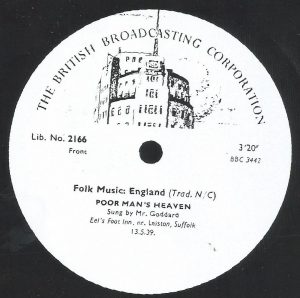
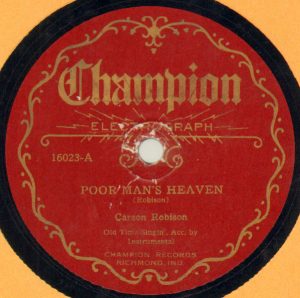
The Eel’s Foot singers were all very local, and were regulars in the pub, which held frequent sing-songs, often after a darts or quoits match. They all lived in easy walking or cycling distance, and worked in a variety of occupations including the railway, gas works and the engineering firm of Garrards in Leiston, an unexpectedly industrial little town in this coastal area of marshes and heaths.
Here again there was a chairman, on this occasion Philip Lumpkin, who famously used a cribbage board to bang on the table and keep order when things got a bit rowdy, which they apparently did on these recordings, as the BBC was footing the drinks bill! Lumpkin was not the first to take the role of Chairman at the Eel’s Foot – although the names seem a little muddled in the various reports, it seems that an older man, possibly Jack Button or a relative in his eighties, had previously acted as chairman.
We have evidence from both the 1939 and 1947 broadcasts from the Eel’s Foot of fees paid by the BBC to performers. A newspaper report from 1939 states the fee to be one guinea, and letters from the BBC Talks Booking Manager to Douglas Morling and Fred Ginger in 1947 offer them each a fee of two guineas, with the letters all being sent care of the Eel’s Foot pub. . I doubt any extra fees were involved in this reworking of the original material, although all the other programmes in the series reveal payment of 10/6d (half a guinea) to most of the singers.
The ongoing relationship between the Eel’s Foot and the left-wing intelligentsia continued through 1940, with a double-page spread of atmospheric images appearing in the photo-journal Picture Post on 14th December.
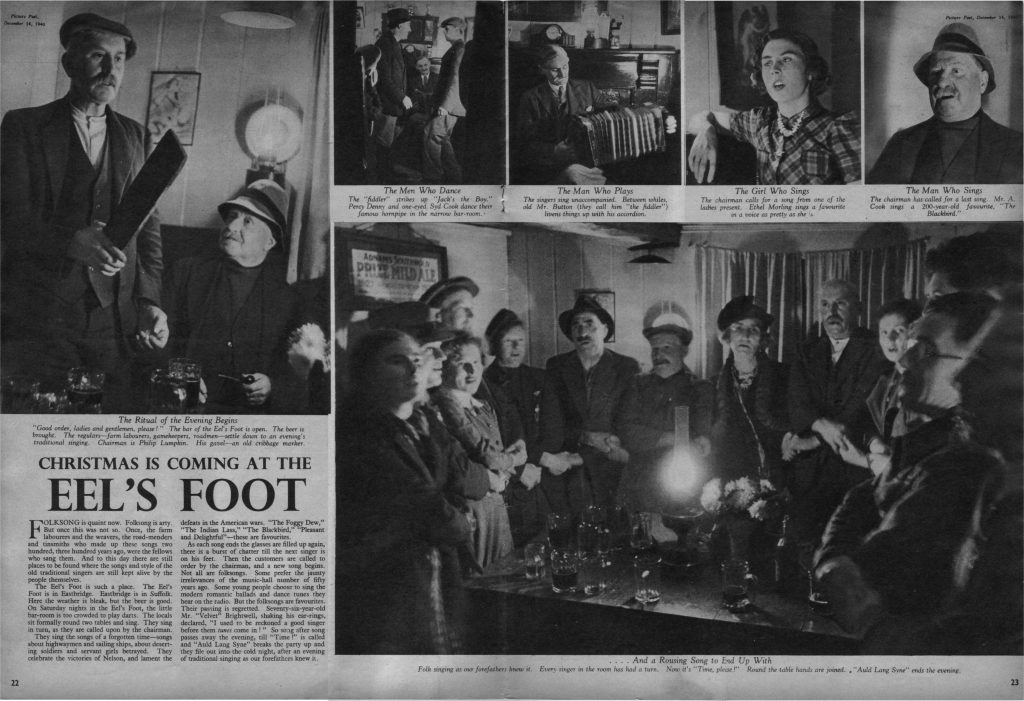
The caption to the large photograph reads: “Folk singing as our forefathers knew it. Every singer in the room has had a turn. Now it’s “Time, please!” Round the table hands are joined. “Auld Lang Syne” ends the evening.”
It is interesting to note there are nearly as many women as men, and that a young woman, Ethel Morling is pictured singing. Ethel was married to Douglas Morling – son of the landlady, Lily Morling, who was married to Philip Lumpkin, the chairman. So this is really an extended family group with a few friends and neighbours including Velvet Brightwell, Percy Denny, Syd Cook and Albert “Diddy” Cook amongst those identified.
Listeners to the Thirsty Work series might have thought women took no part at all in this pub-based singing and music-making, and of course, the tap-rooms of rural pubs were mainly the dominion of men, but apart from Ethel Morling pictured here, The Royal Oak in Ambleside (programme 1) was run by a woman, as was the “other” pub in North Littleton (programme 5), where the landlady was herself a singer. Other pubs were often run by women, even when it was the husband’s name on the licence and there is growing evidence that women – particularly those involved in the pub-keeping trade – were accepted as singers and musicians.
Singers, songs and participants
Tom Goddard (1903-1977) was a farm worker and warrener. At the time of this programme he was living on the Common, next door to the retired Eel’s Foot landlord, Fred Rouse. Apart from Poor Man’s Heaven, he was also known to sing the classic folk song Australia and light-hearted songs such as Buttercup Joe and Lavender Trousers. In an interview with folklorist Keith Summers in the 1970s, he said he learned a lot of his songs off records.
Douglas Morling (1910-1993) was not remembered as a regular singer in the pub. His mother, Lily, ran the Eel’s Foot from 1929, and after her first husband died in 1934, she married Philip Lumpkin, although she continued to use her previous surname. A year earlier, Douglas had married Ethel née Lumpkin, who was presumably a relative of his stepfather. They lived very close to the pub and his trade was plastering.
Philip Lumpkin (1888-1960) had a job in the gas works, but helped out in the pub, continuing to do so after his wife Lily Morling died and her son Stanley and daughter-in-law Eileen took it on, in 1945. He is famous as the chairman of the sing-songs, keeping everyone in order by banging a cribbage-board on the table and calling “Good Order, ladies and gentlemen please!” but he did also sing occasionally, one of his favourites being My Father Kept Two Rabbits.
Fred Ginger (1910-1984) was born into the family that had kept the Eel’s Foot since at least 1841. His grandfather Fred Rouse kept the Eel’s Foot when he was born, then his mother and father (Ethel née Rouse and James Ginger) took it on from 1922 until the Morlings came in 1929. He married Dora Brightwell, daughter of Velvet (and sister of Jumbo). Local people recalled that Fred worked for the river board, but this may be his father, who in 1939 was living in the cottages near the sluice, whilst Fred and Dora were living in Leiston, where he was working as a plate-layer. It’s not known what else he sang apart from his “star turn” The Old Sow.
William “Velvet” Brightwell (1865-1960) After trying life at sea for a year or two, Velvet took a job locally, working as a plate-layer on the railway at Garrett’s Engineering works in Leiston. He became a foreman and joined the Royal Order of the Buffaloes, where he enjoyed singing at the meetings – it’s not on record what this would have been. His nickname came from his favoured velvet waistcoat. He had two songs on the 1939 radio programme: The Indian Lass and Pleasant and Delightful. Folksong collector Peter Kennedy recorded him when he was 91, when he sang Scarboro’, the Faithful Plough, The Foggy Dew and The Loss of the Ramillies (learned from his father Robert).
His son Jumbo (also William, 1900-1980) had a large repertoire of folksongs, some of which he learned from Velvet, and at least one from his mother. He was recorded by several collectors from the 1950s through to the 1970s, resulting in tracks on a number of compilations as well as a solo LP Songs from the Eel’s Foot issued on the Topic label in 1975.
Harry “Crutter” Cook (1868-1954) Harry worked as a sluiceman on the marshes. He had been born and brought up in Eastbridge, then moved out to live near the hand-operated sluices, from where he would walk up the pub every Saturday night. By 1939 he had moved to the nearby village of Westleton with his wife Emily Maud. Apart from the comic (very un-PC) song Duck-Foot Sue, he is also remembered as singing Blow the Candle Out, Ramble Away and Newlyn Town.
Walter Button (“concertina” in the Radio Times) – this could be an error, as local knowledge has this person as Jack Button (William John Button 1873-1955) who played the melodeon, not the concertina, as can be seen in the Picture Post photospread. He was brought up next door the Eel’s Foot and later moved to Leiston where he ran a shop with his widowed mother. He married in 1904 and his early married life included a spell back in Eastbridge, but by 1939 he was again in Leiston, working as a gardener. His daughter Aline married Alfred Stollery, and both she and her son Eric were singers recorded by Keith Summers in the 1970s.
E.J. Moeran, the composer and folklorist, who instigated the 1947 recordings (East Anglia Sings) wrote about that occasion in the 1948 Journal of the EFDSS: “Two weeks after my preliminary trip I went again with a recording van. The singers seemed quite excited about it and were out to do their very best. The engineers, for the most part, arranged things in such a way that all the men had to do was sit and sing and carry on as usual.” At no point did there seem to be any acknowledgement that this was not the first time this had happened, but other comments here, about the singers being “uncontaminated by outside influences” reveal a somewhat naïve view of the social context, and ironically, in a 1946 article written for The Countrygoer in Autumn”, Moeran wrote: “Until the advent of the radio, [spontaneous singing of the old songs] held on in certain isolated districts …” so he must have been uncomfortably aware that the very medium that he was working with was (in his view) contributing to the decline of the phenomenon they were recording.
Programme 4: The Exeter’s Arms, Wakerley, Northamptonshire
Broadcast on 14th June 1940
In some ways this fourth programme in the series is potentially the most interesting, as it is from a geographical area little covered by collectors. Wakerley is technically in Northamptonshire, but is right on the border of Rutland, about 10 miles from Stamford and 20 miles west of Peterborough.
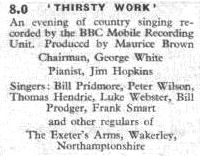 “An evening of country singing recorded by the BBC Mobile Recording Unit. Produced by Maurice Brown; Chairman, George White; Pianist, Jim Hopkins; Singers: Bill Pridmore, Peter Wilson, Thomas Hendrie, Luke Webster, Bill Prodger, Frank Smart and other regulars of The Exeter’s Arms, Wakerley, Northamptonshire.”
“An evening of country singing recorded by the BBC Mobile Recording Unit. Produced by Maurice Brown; Chairman, George White; Pianist, Jim Hopkins; Singers: Bill Pridmore, Peter Wilson, Thomas Hendrie, Luke Webster, Bill Prodger, Frank Smart and other regulars of The Exeter’s Arms, Wakerley, Northamptonshire.”
Working from the original information in the Radio Times, I was only able to identify four out of the eight singers named, who were all from the small inter-linked villages of Wakerley and Barrowden. Wakerley itself is so small that in the 1939 Register, the houses are simply numbered, with no road names, e.g. “No.3, Wakerley”.
None of the singers mentioned have been “collected”, and no recordings are indicated anywhere in the archives, and to compound the problem, there was even some question over the identity of the pub, as there had been a pub called the Exeter’s Arms in Wakerley, which closed at an unspecified date, and another pub in the contiguous village of Barrowden took on the name Exeter Arms, again at an unspecified date!
To our great good fortune, the documentation held at the BBC Written Archives Centre has provided a lot of information about this hitherto mysterious issue of the series, and I have now been able to find out the songs sung there, and to correctly identify virtually all the singers.
The BBC archive material has also shed some light on how this pub came to be selected as a venue for the Thirsty Work series. I had initially supposed that the chairman George White had been the point of contact (see below) and this could still be the case, but the existing documentation suggests that the first discussions were between a Mr Ladbrook from the BBC (Charles “Laddie” Ladbrook, a sound engineer and studio producer) and the pub’s landlord, George Miller, as shown in this letter from Maurice Brown dated 9th April 1940:
“Dear Mr Miller, I believe Mr Ladbrook of the BBC told you that I am producing a series of programmes recorded in pubs of local singers singing local songs. He has told me that there is a great deal of singing at the Exeter’s Arms. Would it be possible, given enough notice, for you to assemble these singers one Saturday night for me to hear? If they sing a varied enough selection and their songs are sufficiently local, could I then come down with a recording van and make records? These programmes are being broadcast to the Forces, and individual pubs should appeal to regiments enlisted from that district.”
White (described as the proprietor of the Market Hotel, Shirebrook) was mentioned to Brown by BBC Midlands producer Robin Whitworth who was one of Maurice Brown’s great allies (see Part 1) in finding suitable pubs, though he commented that the Market Hotel itself was too big to be a suitable venue for a Thirsty Work programme.
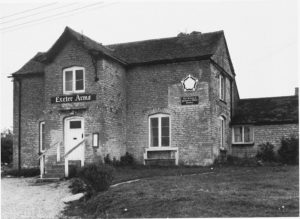
Singers
Percy George White (1887-1967) who acted as the chairman seems to have charted an interesting course through life. He appears in public documents variously as Percy White and George White, and in the 1939 register he was living in Wakerley, and his job given as a commercial traveller (travelling salesman I think), but it seems he had a performing career outside of chairing an evening sing-song in the local pub …
Two advertisements placed in the “Small Ads” in the Boston Guardian in 1945 and 1949 respectively stated:
“GEORGE WHITE. The Always Successful Comedian. Open for Engagements. Address. Wakerley. Oakham.” (24 January 1945)
GEORGE WHITE. Comedian.— expert compere, for concerts, etc. Also M.C. socials and dances. —Wakerley. Oakham.” (2 March 1949)
As a young man he left home and in 1911 was lodging in Woking, Surrey. Then it seems that his life took a rather more adventurous turn – although I can’t be 100% certain this is the same man, it seems very likely – in the receiving book for Mountjoy Prison in Dublin, on 12th February 1924, a man with the same full name was committed to gaol for tax evasion, having been tried in Co. Longford. He was at that time a theatre manager of no fixed abode, born in 1887 in Wakerley, and had a wife, Dorothy, who was travelling with the theatre. This appears to be Dorothy Grafton and they were married in Naas, Co. Kildare in 1915. I don’t know whether she was English or Irish, as I can find no further trace of her. In the 1939 Register, back in Wakerley, after his mother’s death, George White is listed as married, but is living on his own. His only other criminal conviction was for not paying for a dog licence in Wakerley in 1941 – so this remains a tantalising mystery at the moment!
Thomas Hendrie (1912-1980) was born in Yorkshire of a Scottish family. The BBC archive documentation gave his address as “Farm Shade” – this is actually the hamlet of Fineshade/ Fineshade Woods, just south of Wakerley. The information from the 1939 register shows him living in Apethorpe, which may be the same location, and he was working in forestry. It looks as if he emigrated to New South Wales in Australia sometime before 1977.
Joseph Pridmore’s address was given in the BBC documentation as “Vine Shade” – so clearly Fineshade again, but I have not found anyone in the 1939 register or other sources to match this person.
The BBC archives (giving his initials, and address in nearby Nassington) did how however enable a correct identification for Bill Prodger – as Gwilym Lloyd Prodger – (1913-1964). He worked in the iron ore industry and was the son of William Prodger, whom I had previously thought to be the Thirsty Work singer. The family were Welsh, via Yorkshire.
The documentation in the BBC archives also enabled a correct identification of Bill Pridmore (1874-1955) as a general labourer and woodman, living in the neighbouring village of Barrowden, who was pianist Jim Hopkins’ uncle.
Jim Hopkins (1911-n.d.) worked in the iron ore industry as a loco driver and lived in the neighbouring village of Barrowden.
“Luke” Webster from the Radio Times turns out to be Ernest Pickard Webster (1905-1974) who was a farm worker born and bred in Wakerley.
It’s not surprising that Frank Smart (1880-1957) was difficult to find – it was only his address given in the BBC archives that identified him as living over 50 miles from Wakerley, in Helmdon, near Brackley. I have not been able to find any family or occupational link with Wakerley, so it’s a mystery how he came to be there that night! He had grown up in Stratford-on-Avon, where his father worked on the railways, and that is the occupation Frank followed too, being the station-master at Helmdon in the 1939 register.
Peter / E. Wilson and Sam White remain unidentified, despite my best attempts.
Songs
In the BBC Written Archives Centre, the “Programme as Broadcast” documentation has survived and reveals ten songs that were broadcast in this programme:
- Aby my Boy – Chorus
- Farmer Giles – Frank Smart
- I don’t work for a living – Peter Wilson
- Farmer’s Boy – Thomas Hendrie
- One man went a-mowing – Chorus
- Bank of the Clyde – Bill Pridmore
- Apple Dumplings – George White
- Rose of Tralee – Bill Prodger
- The Ships that Never Returned – Luke Webster
- Brother Sylveste – Chorus
Maurice Brown wrote to landlord George Miller on 3rd May 1940, asking for the following three songs, which he had evidently heard during his initial “see and hear” visit the night before, but these were not included in the broadcast.
- Wire in, my Lads – George (Percy) White
- The Lincolnshire Poacher – Sam White
- When first I went a Waggoning – Joe Pridmore
In July 1940, Maurice Brown sent off the recordings made at the Exeter’s Arms for “processing”: “Here are the records made at the Exeter’s Arms, Wakerley. One can be resprayed, eight kept and re-vaselined and the remainder, detailed below, processed if possible, with introductions and applause.”
The songs he selected were: The Ship that Never Returned, The Farmer’s Boy (local version): 2nd attempt, I Don’t Work for a Living: 2nd attempt, My Brother Sylveste, Farmer Giles and Apple Dumplings plus some general sound effects. At the moment, it is not known if these recordings are still in existence anywhere.
In the BBC “programme as broadcast” document, all songs are marked “Trad” which is clearly not the case! Maurice Brown’s idea for these programmes was not strictly limited to folk songs (See Part 1 for more discussion of this) and he “knew his onions” about the various genres of song, so this comment seems a bit disingenuous and maybe hurried; but I doubt it would have thrown the BBC copyright hounds off the scent!
So now, thanks to the information discovered in the BBC written archives, we have a bit more idea of what people were singing in this area little covered by folksong collectors.
‘Thirsty Work’ Part 1: traditional singing on the radio 1940-41
‘Thirsty Work’ Part 2: the North – singing from Ambleside, Redmire and Harome
‘Thirsty Work’ Part 4: Cotswolds – two programmes with an unexpected link with “The Archers”: singing from North Littleton and Ebrington
‘Thirsty Work’ part 5: Director’s Cut – recordings from Programmes 5 & 6 and other updates.
I originally found out about the Thirsty Work programmes on the Radio Times Programme Index (previously known as the Genome project), which is very easy to browse and search. Further information on the making of these programmes has been added from the BBC Written Archives Centre, which is by appointment only, in person.
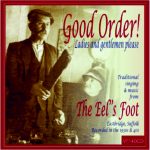 The Good Order CD on the Veteran label was produced as a community project, with every household in the villages of Eastbridge and Theberton being given a free copy of the CD. Much of the research in this article was carried out for that project in 1999/2000 including interviews with people such as Eileen Morling, who had been landlady when the BBC visited in 1947, and family members of many of the singers featured. Further details on the Veteran CDs website.
The Good Order CD on the Veteran label was produced as a community project, with every household in the villages of Eastbridge and Theberton being given a free copy of the CD. Much of the research in this article was carried out for that project in 1999/2000 including interviews with people such as Eileen Morling, who had been landlady when the BBC visited in 1947, and family members of many of the singers featured. Further details on the Veteran CDs website.
In the 1970s Keith Summers interviewed, recorded and photographed many singers and musicians in Suffolk. The resulting written work, Sing Say or Pay! is now published online, and there’s a Chapter on the Eel’s Foot.
E.J. Moeran wrote about his experiences at the Eel’s Foot in 1947 in Some Folk Singing of Today (Journal of the English Folk Dance & Song Society, 1948) and also Folk-songs and some Traditional Singers in East Anglia (in The Countrygoer in Autumn, 1946).
Anyone wishing to cite this original research should credit it to Katie Howson and cite this website as the source. © Katie Howson, 2021.
It is due to be published in print form in the near future, and details will be posted here when known. Should you wish to use any of the information or images here, please do contact me first.
I have far more biographical and anecdotal evidence about the singers than can be published here – if you are a relative or a researcher, please do get in touch, I would be very happy to share the information I have.
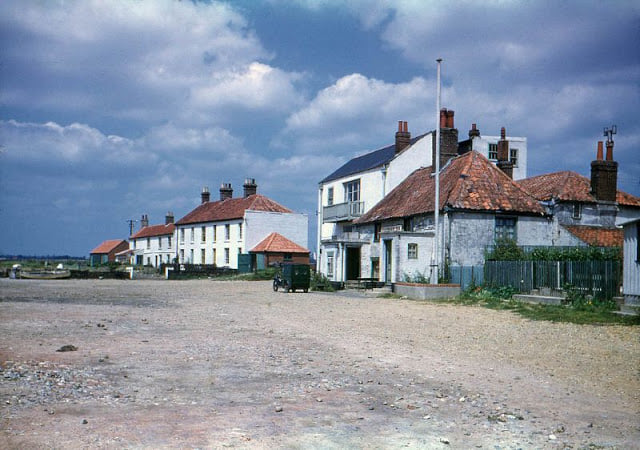
 Previously, the ownership and management of the pub had been tied in with that of the Blackshore quay and wharf, used by trading vessels and fishermen, although many of these preferred to launch off the beach. The narrow entrance to the harbour, at the mouth of the river Blyth, was (and still is) notorious. This black-and-white image shows the pub on the left, looking towards the river mouth.
Previously, the ownership and management of the pub had been tied in with that of the Blackshore quay and wharf, used by trading vessels and fishermen, although many of these preferred to launch off the beach. The narrow entrance to the harbour, at the mouth of the river Blyth, was (and still is) notorious. This black-and-white image shows the pub on the left, looking towards the river mouth.
 John ‘Dusso’ Winter (1932-2019) was born into a fishing family which had been in Southwold for at least seven generations. His memory of the pub (and plenty of others in the town!) goes back to his days as a teenager and young adult, in the 1940s and 50s. He picked up many songs in the pubs, particularly the Harbour Inn and recalled some of the singers:
John ‘Dusso’ Winter (1932-2019) was born into a fishing family which had been in Southwold for at least seven generations. His memory of the pub (and plenty of others in the town!) goes back to his days as a teenager and young adult, in the 1940s and 50s. He picked up many songs in the pubs, particularly the Harbour Inn and recalled some of the singers:
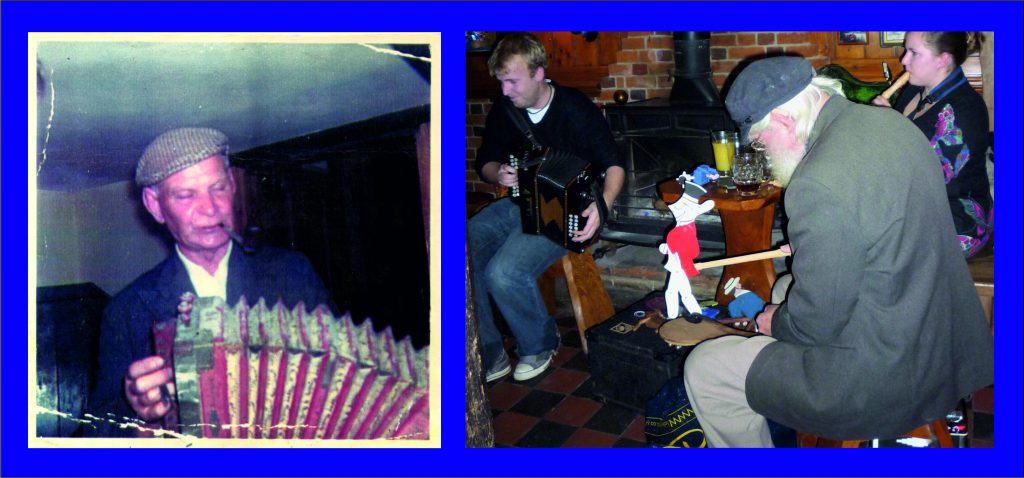


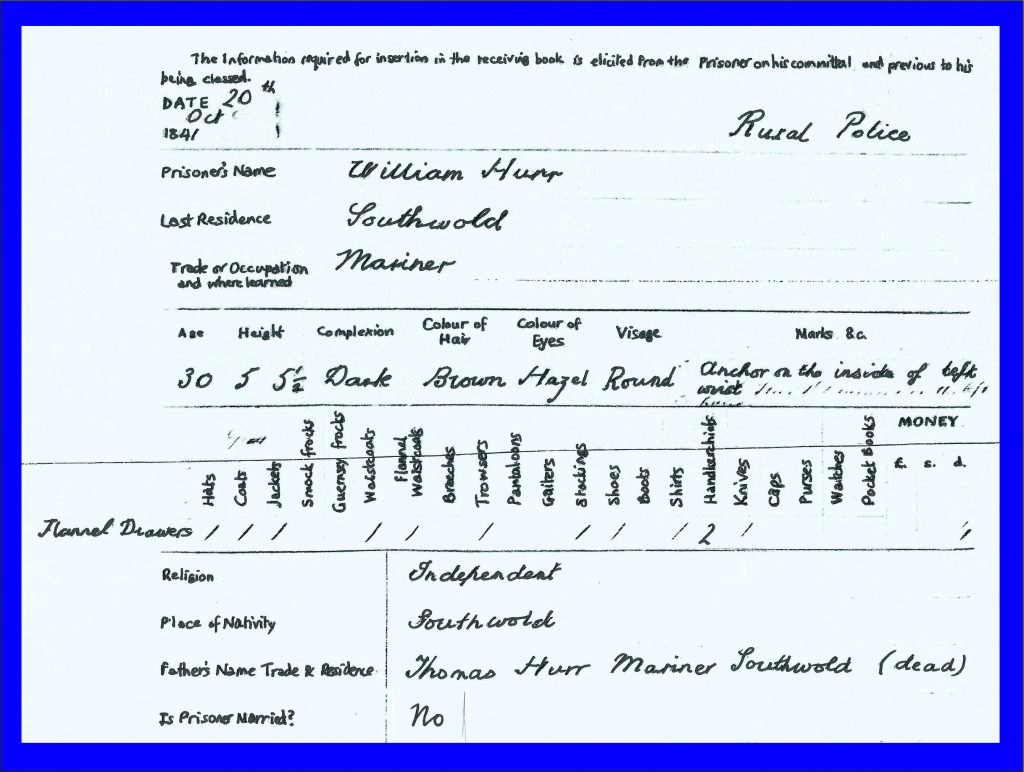
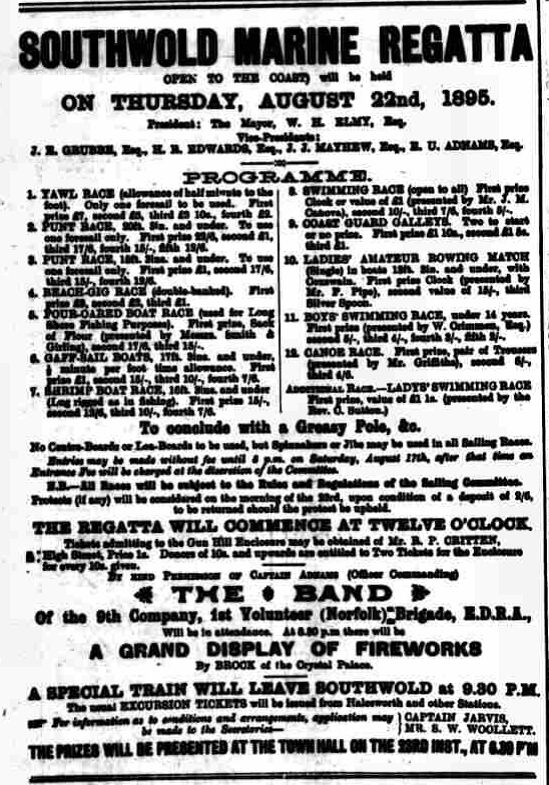 The boats were also used occasionally in competitions during regattas, and William’s family and boats had some successes: in those days, the fishing boats were at the heart of the event. In 1888 his son Sam was placed 5th in the 20ft punt class, in the Vigilant, and in 1889, the Ipswich Journal of 30th August reported the following result: “Punt race (20 feet and under): 1st prize of 25s. to Hurr’s Susannah; 3rd prize of 20s. to Hurr’s Vigilant – which nearly took second place.” That was to prove the zenith of the Hurrs competitive success – in 1893, the Vigilant came in 5th, still gaining a prize of 15 shillings and after that I cannot find any of William’s family listed: a likely reason is about to be revealed …
The boats were also used occasionally in competitions during regattas, and William’s family and boats had some successes: in those days, the fishing boats were at the heart of the event. In 1888 his son Sam was placed 5th in the 20ft punt class, in the Vigilant, and in 1889, the Ipswich Journal of 30th August reported the following result: “Punt race (20 feet and under): 1st prize of 25s. to Hurr’s Susannah; 3rd prize of 20s. to Hurr’s Vigilant – which nearly took second place.” That was to prove the zenith of the Hurrs competitive success – in 1893, the Vigilant came in 5th, still gaining a prize of 15 shillings and after that I cannot find any of William’s family listed: a likely reason is about to be revealed …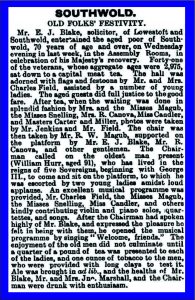
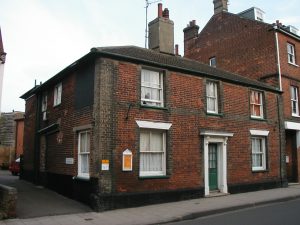 The Southwold Arms stood at 58, High Street, the next building seawards to the present day Sutherland House, and is no longer a pub. It was known as the Green Man until 1803, then the Joiners Arms, until 1839 when it was renamed The Southwold Arms. From 1869 to 1897, it was run by Robert and Sophia MacKenzie and hosted many congenial events for locals and visitors alike.
The Southwold Arms stood at 58, High Street, the next building seawards to the present day Sutherland House, and is no longer a pub. It was known as the Green Man until 1803, then the Joiners Arms, until 1839 when it was renamed The Southwold Arms. From 1869 to 1897, it was run by Robert and Sophia MacKenzie and hosted many congenial events for locals and visitors alike. 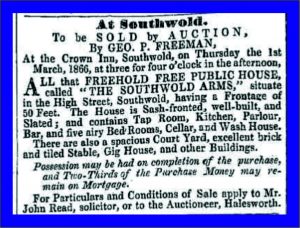 It had several letting rooms, as indicated in this auction notice from the Ipswich Journal of 24th February 1866, shortly before MacKenzie bought it.
It had several letting rooms, as indicated in this auction notice from the Ipswich Journal of 24th February 1866, shortly before MacKenzie bought it.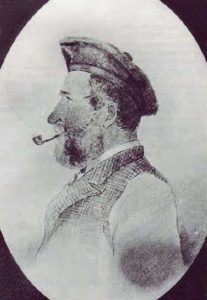 “Mac always wore a tam-o-shanter thus providing the unmistakable hallmark of Scotland. Mackenzie served for 18 months in the Crimea in the Scots Guards later becoming Colour Sergeant; he also served in Canada with the same Regiment when the Fenian Raids were expected from the United States. He was married in St. Martin’s in the Fields, Trafalgar Square to a Dunwich lady who was as popular as he at the Southwold Arms. Mackenzie gathered together a number of well-to-do visitors who stayed at his house during the holidays, and who became known as Mackenzie’s “lambs” and sometimes as the “madcap visitors”.
“Mac always wore a tam-o-shanter thus providing the unmistakable hallmark of Scotland. Mackenzie served for 18 months in the Crimea in the Scots Guards later becoming Colour Sergeant; he also served in Canada with the same Regiment when the Fenian Raids were expected from the United States. He was married in St. Martin’s in the Fields, Trafalgar Square to a Dunwich lady who was as popular as he at the Southwold Arms. Mackenzie gathered together a number of well-to-do visitors who stayed at his house during the holidays, and who became known as Mackenzie’s “lambs” and sometimes as the “madcap visitors”. 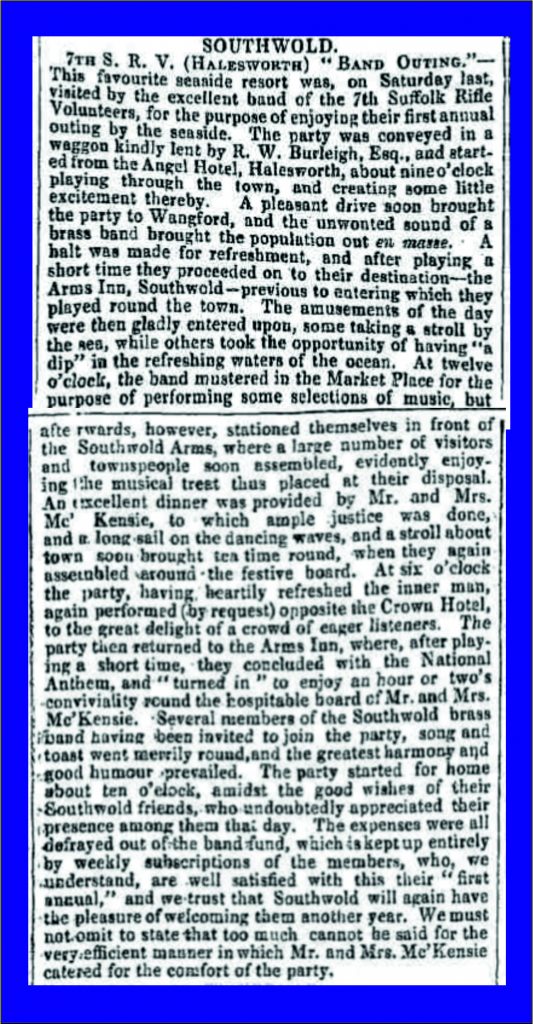 With Mac’s military reputation and Sophia’s culinary one, they evidently made a good team. Newspaper reports throughout the 1870s and 1880s show that they hosted the Suffolk Rifle Volunteers and other such groups on their annual band outings, providing a base for the day, generous meals and convivial musical evenings at the pub. Here is a typical report from the Ipswich Journal from 24th August, 1872.
With Mac’s military reputation and Sophia’s culinary one, they evidently made a good team. Newspaper reports throughout the 1870s and 1880s show that they hosted the Suffolk Rifle Volunteers and other such groups on their annual band outings, providing a base for the day, generous meals and convivial musical evenings at the pub. Here is a typical report from the Ipswich Journal from 24th August, 1872. Some years ago I interviewed Hilda Palmer and Dale Peck about their memories and they told me that in the 1970s after a darts match on a Friday or Saturday evening, Frank Palmer (bottom left in this photo) and others including Graham Lewis and Henry, Jockey and Hettie Hurr (cousins of Frank’s) would sing old favourites such as The Faithful Sailor Boy, The Mermaid, The Miner’s Dream of Home and The Rugged Cross, alongside more recent songs such as The Northern Lights of Old Aberdeen, The Happy Wanderer or Red Sails in the Sunset. Comic songs such as Albert & Sadie (a parody of Frankie and Johnny – an old American folksong popularised in 1966 by Elvis Presley) or What a Wonderful Fish the Sole Is were always popular too, with the audience joining in lustily.
Some years ago I interviewed Hilda Palmer and Dale Peck about their memories and they told me that in the 1970s after a darts match on a Friday or Saturday evening, Frank Palmer (bottom left in this photo) and others including Graham Lewis and Henry, Jockey and Hettie Hurr (cousins of Frank’s) would sing old favourites such as The Faithful Sailor Boy, The Mermaid, The Miner’s Dream of Home and The Rugged Cross, alongside more recent songs such as The Northern Lights of Old Aberdeen, The Happy Wanderer or Red Sails in the Sunset. Comic songs such as Albert & Sadie (a parody of Frankie and Johnny – an old American folksong popularised in 1966 by Elvis Presley) or What a Wonderful Fish the Sole Is were always popular too, with the audience joining in lustily.
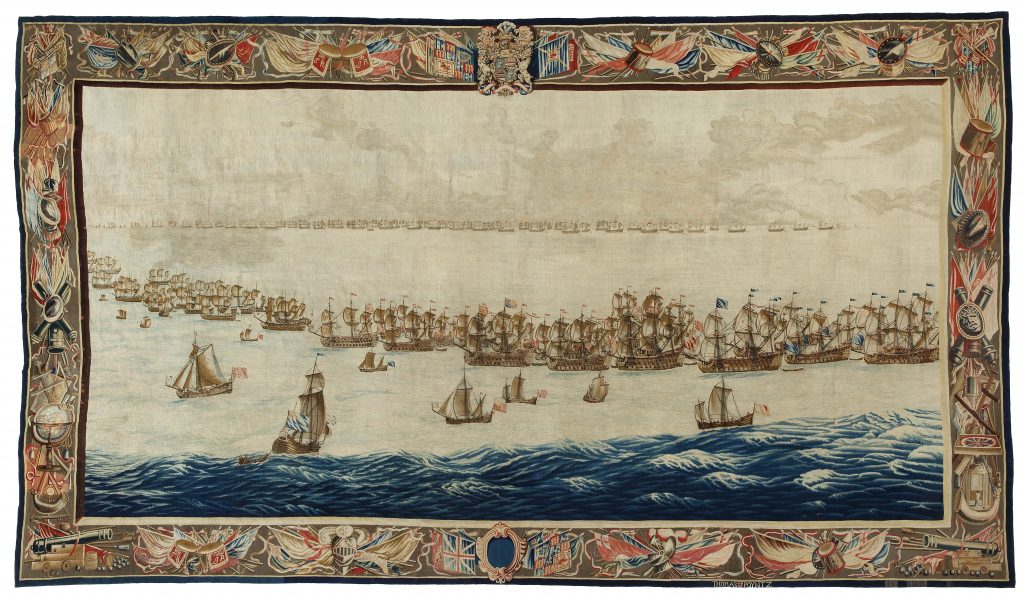
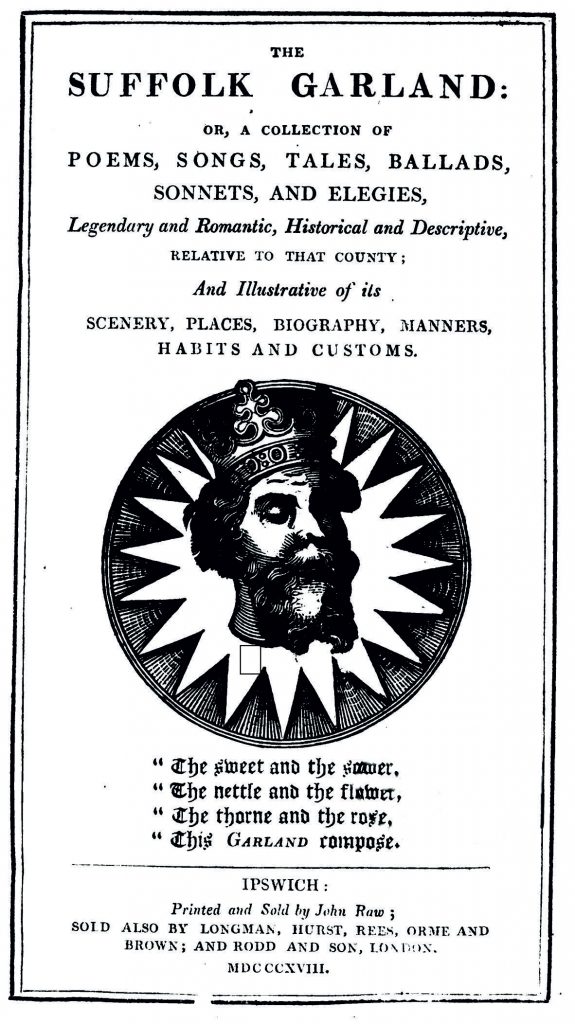 The song is usually titled A Merry Song on the Duke’s Late Glorious Success over the Dutch and was first published in The Suffolk Garland in 1818 and subsequently printed in several collections in the 1840s and occasionally in the twentieth century, including those listed here.
The song is usually titled A Merry Song on the Duke’s Late Glorious Success over the Dutch and was first published in The Suffolk Garland in 1818 and subsequently printed in several collections in the 1840s and occasionally in the twentieth century, including those listed here.
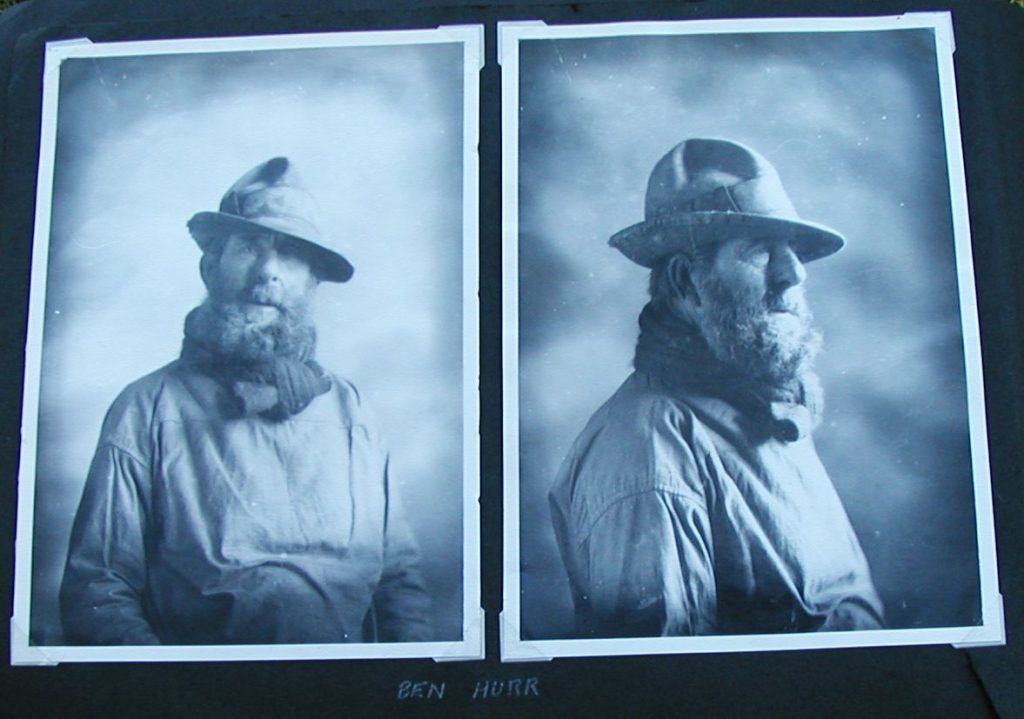
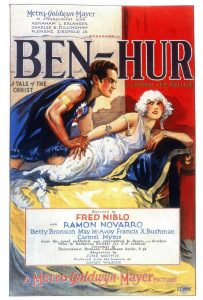 It’s just possible that this Ben Hurr (from Southwold on the Suffolk coast) knew of the famous film character Ben-Hur, as the 1880 novel was first released as a silent movie in 1925, and Southwold had its very own Electric Picture Palace from 1912. I hope the coincidence would have amused him as much as it did me when I first came across his name as a fisherman from whom folksong collectors Ralph Vaughan Williams and George Butterworth noted down songs in 1910.
It’s just possible that this Ben Hurr (from Southwold on the Suffolk coast) knew of the famous film character Ben-Hur, as the 1880 novel was first released as a silent movie in 1925, and Southwold had its very own Electric Picture Palace from 1912. I hope the coincidence would have amused him as much as it did me when I first came across his name as a fisherman from whom folksong collectors Ralph Vaughan Williams and George Butterworth noted down songs in 1910.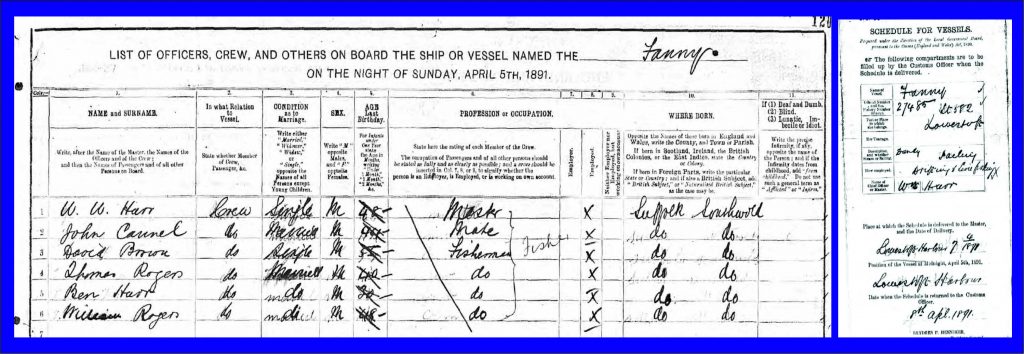 Benjamin Lowsey Hurr was the seventh child of William and Maria Hurr. Ben married Louisa Stannard in 1881 and they had one son. On the night of the 1891 census, 5th April, Ben was on board the Fanny, berthed in Lowestoft harbour. The master was his older brother William Watson Hurr and there were four other crew members.
Benjamin Lowsey Hurr was the seventh child of William and Maria Hurr. Ben married Louisa Stannard in 1881 and they had one son. On the night of the 1891 census, 5th April, Ben was on board the Fanny, berthed in Lowestoft harbour. The master was his older brother William Watson Hurr and there were four other crew members.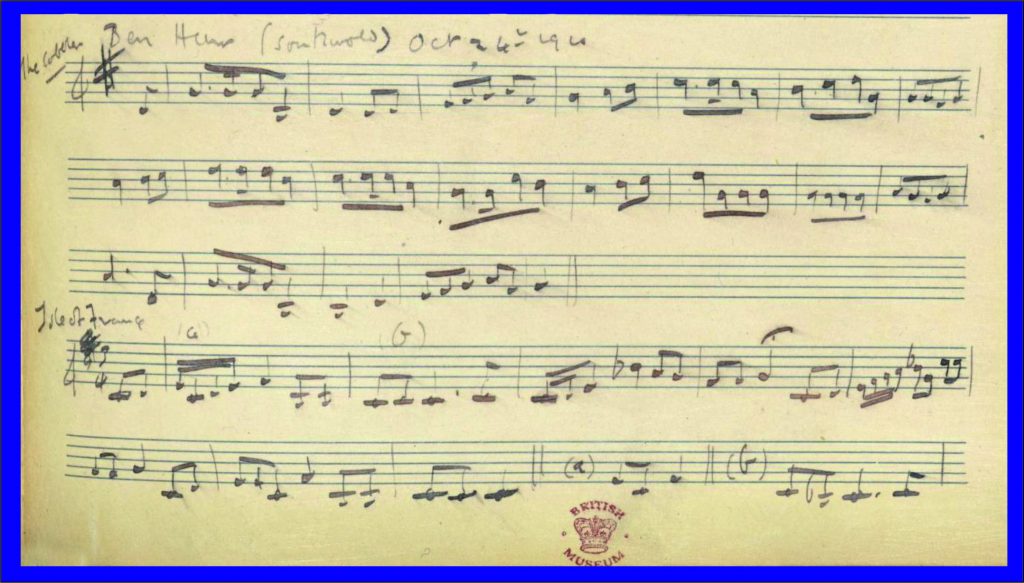
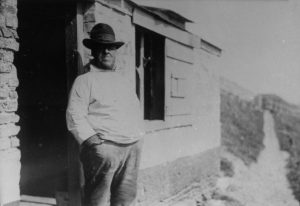
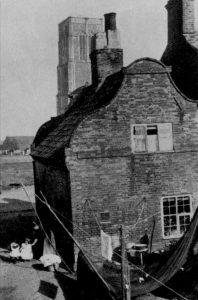 By 1901 Dubber and his family were living in what is now the Southwold Museum, which was then divided into two tiny cottages later condemned as unfit for housing. In the photograph here, you can just make out Matilda with two children, Susannah and Sam. They went on to have another daughter, Ellen in 1902, when Matilda was 47, whilst her two children from her first marriage were brought up by her brother and sister along the coast in Easton Bavents. Susannah is reputed to have been a professional singer, but I can find no evidence of this. Susannah’s husband Edgar Stockbridge worked in the brewery business and they moved away, eventually settling in Stevenage.
By 1901 Dubber and his family were living in what is now the Southwold Museum, which was then divided into two tiny cottages later condemned as unfit for housing. In the photograph here, you can just make out Matilda with two children, Susannah and Sam. They went on to have another daughter, Ellen in 1902, when Matilda was 47, whilst her two children from her first marriage were brought up by her brother and sister along the coast in Easton Bavents. Susannah is reputed to have been a professional singer, but I can find no evidence of this. Susannah’s husband Edgar Stockbridge worked in the brewery business and they moved away, eventually settling in Stevenage.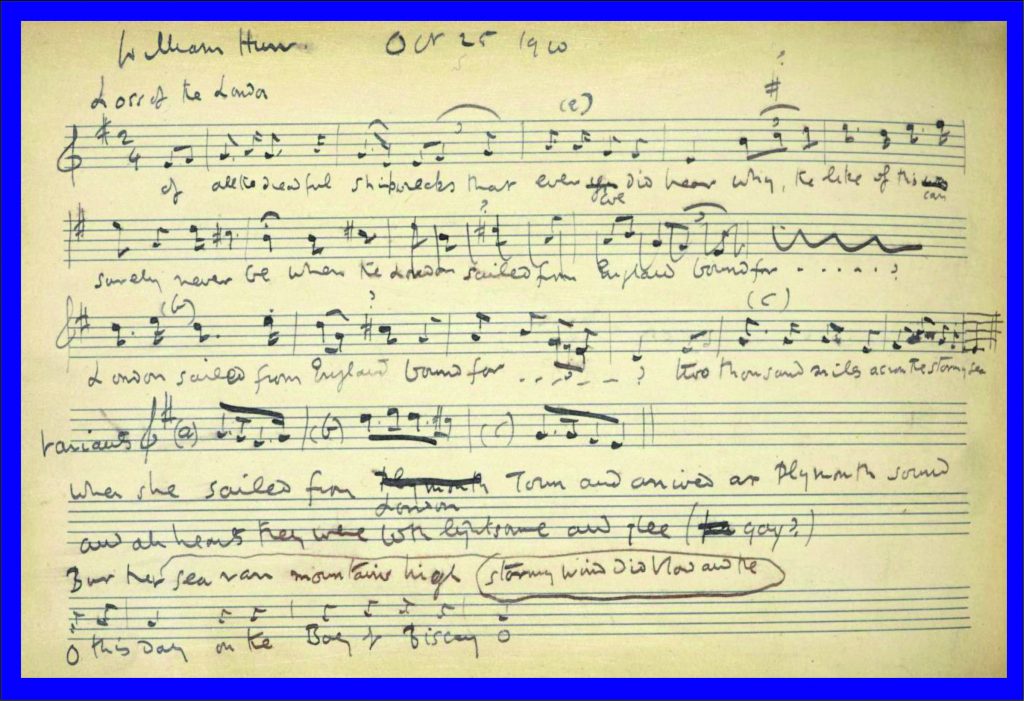
 In later years Robert worked in partnership with his son Walter (pictured on the left here, with Robert on the right). After the Second World War, Walter co-owned the boat Daisy with Ben’s son: these appear to be the last two of the family to be working fishermen.
In later years Robert worked in partnership with his son Walter (pictured on the left here, with Robert on the right). After the Second World War, Walter co-owned the boat Daisy with Ben’s son: these appear to be the last two of the family to be working fishermen.
 Martin Shaw grew up to be a very well-known and respected composer (Morning has Broken for example) and as a student he met Ralph Vaughan Williams. The two became lifelong friends and their correspondence includes some mention of folksong: Vaughan Williams encouraged Shaw to visit William Hurr but there’s no indication of whether he ever did – he certainly did not note down or describe any traditional singing apart from this one mention of George Hurr from his childhood years.
Martin Shaw grew up to be a very well-known and respected composer (Morning has Broken for example) and as a student he met Ralph Vaughan Williams. The two became lifelong friends and their correspondence includes some mention of folksong: Vaughan Williams encouraged Shaw to visit William Hurr but there’s no indication of whether he ever did – he certainly did not note down or describe any traditional singing apart from this one mention of George Hurr from his childhood years. 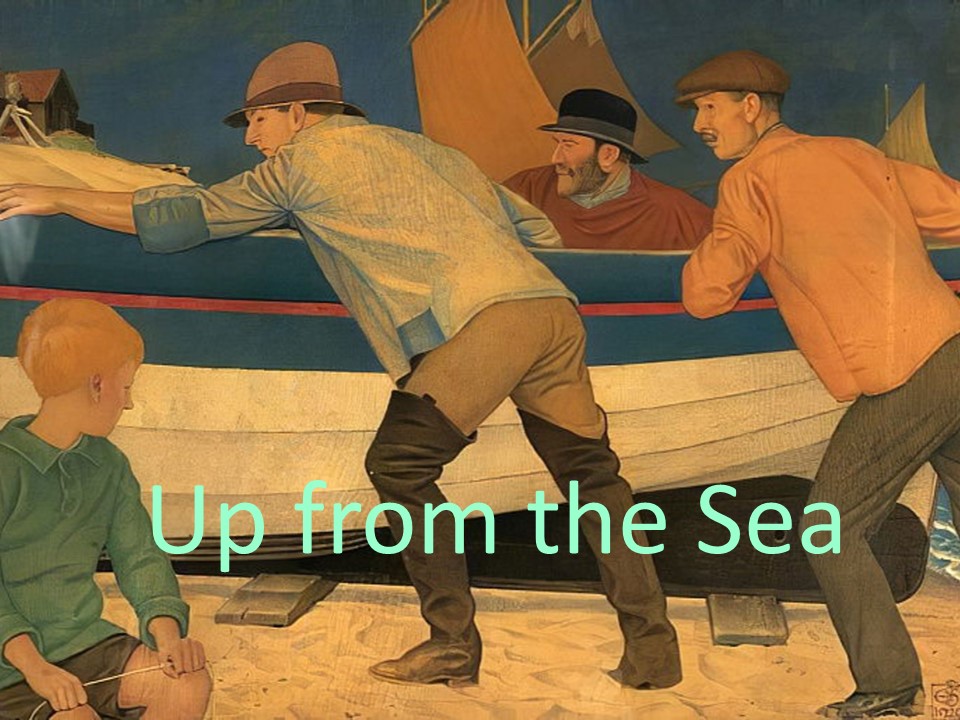 In April 2021 I presented one aspect of my work on the singing traditions from Southwold, in Suffolk for an online talk entitled Up from the Sea: Sea Songs from Southwold on the Suffolk Coast.
In April 2021 I presented one aspect of my work on the singing traditions from Southwold, in Suffolk for an online talk entitled Up from the Sea: Sea Songs from Southwold on the Suffolk Coast. He fell in love with a first cousin, Anna Elizabeth Baker (known as Bessie), and because of their close kinship they delayed their marriage until they were both in their early 40s. Joe and Bessie first came to Southwold on their honeymoon in 1903 and spent weeks in the town every summer for most of the ensuing 34 years. He evidently found much inspiration in both the fishing fraternity and the fashionable holiday-makers, but Bessie was also involved, sewing the fabric paintings on to frames and applying numerous coats of gesso and size to finish the work. The Southalls also made their own egg-based paint and carved and gilded picture frames. Colour was of the utmost importance and no varnishing was allowed, although Goodall aimed to suffuse his images with a “golden hue”.
He fell in love with a first cousin, Anna Elizabeth Baker (known as Bessie), and because of their close kinship they delayed their marriage until they were both in their early 40s. Joe and Bessie first came to Southwold on their honeymoon in 1903 and spent weeks in the town every summer for most of the ensuing 34 years. He evidently found much inspiration in both the fishing fraternity and the fashionable holiday-makers, but Bessie was also involved, sewing the fabric paintings on to frames and applying numerous coats of gesso and size to finish the work. The Southalls also made their own egg-based paint and carved and gilded picture frames. Colour was of the utmost importance and no varnishing was allowed, although Goodall aimed to suffuse his images with a “golden hue”.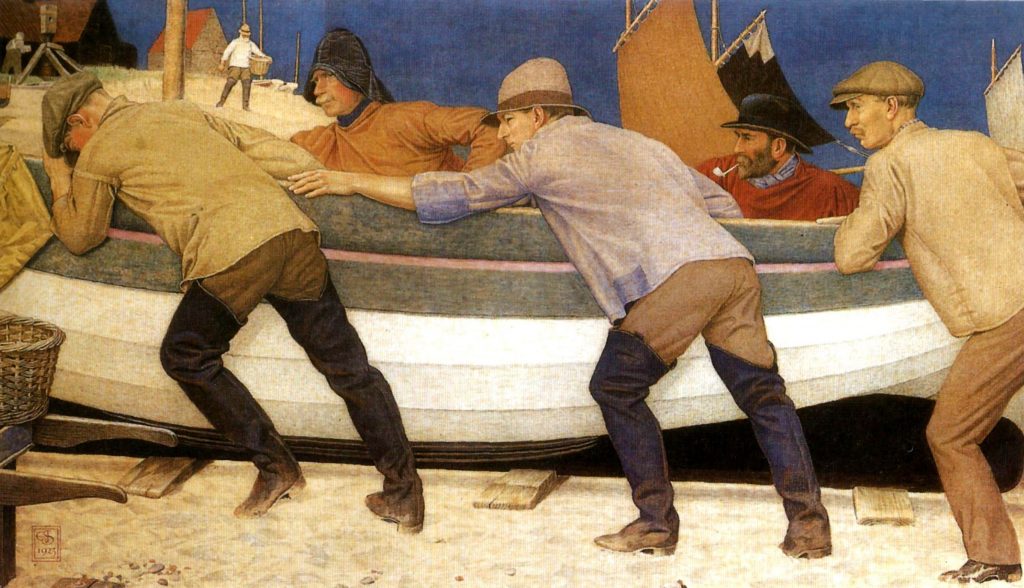
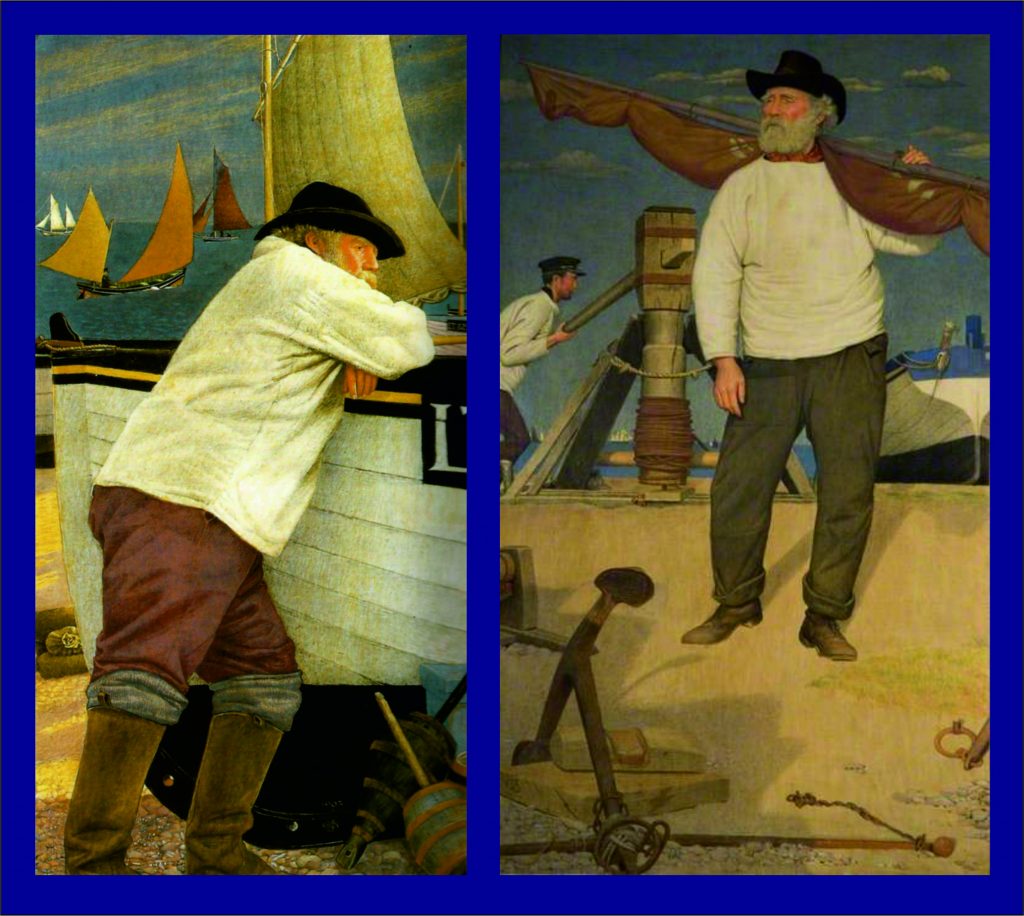 Southall’s images of holiday makers in Southwold show the changing fashions and habits in sea-bathing, and it is well worth browsing the internet where many more can be viewed.
Southall’s images of holiday makers in Southwold show the changing fashions and habits in sea-bathing, and it is well worth browsing the internet where many more can be viewed.
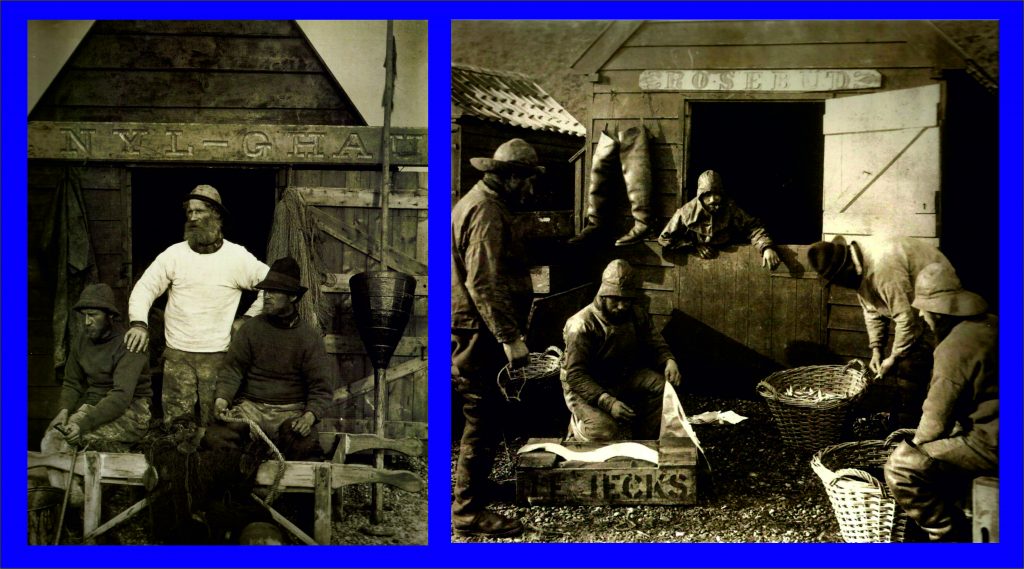

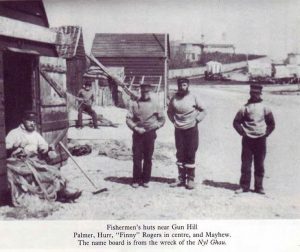 It is as well that Jenkins wrote the caption “The name board is from the wreck of the Nyl Ghau,” as it is not legible from the photo itself, but is clearly visible in Emerson’s photograph above.
It is as well that Jenkins wrote the caption “The name board is from the wreck of the Nyl Ghau,” as it is not legible from the photo itself, but is clearly visible in Emerson’s photograph above.
Recent Comments